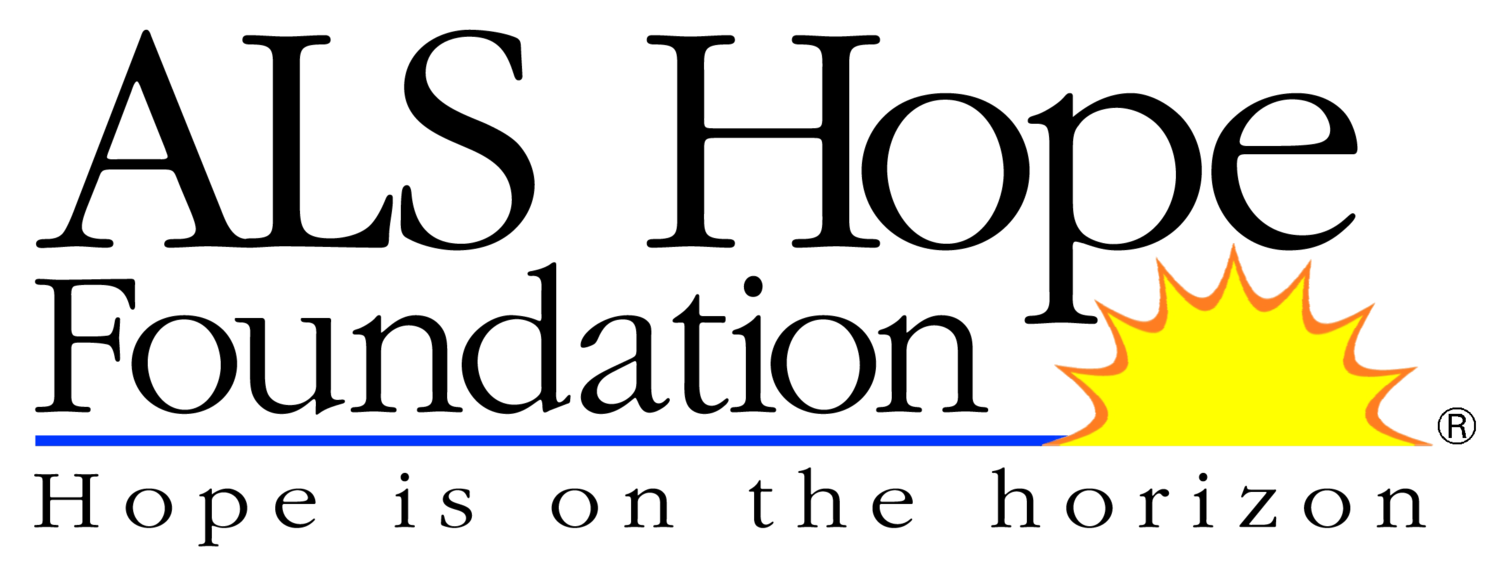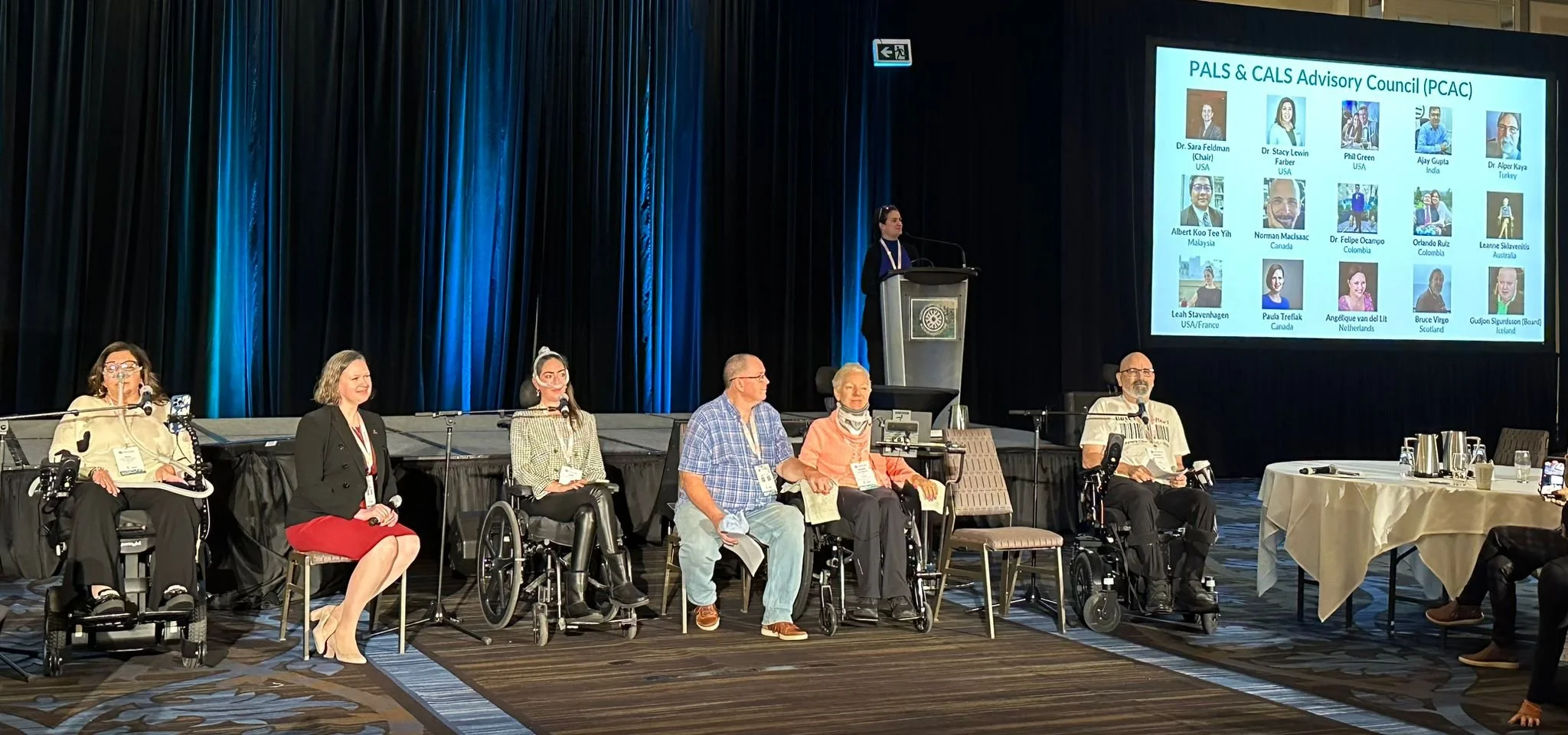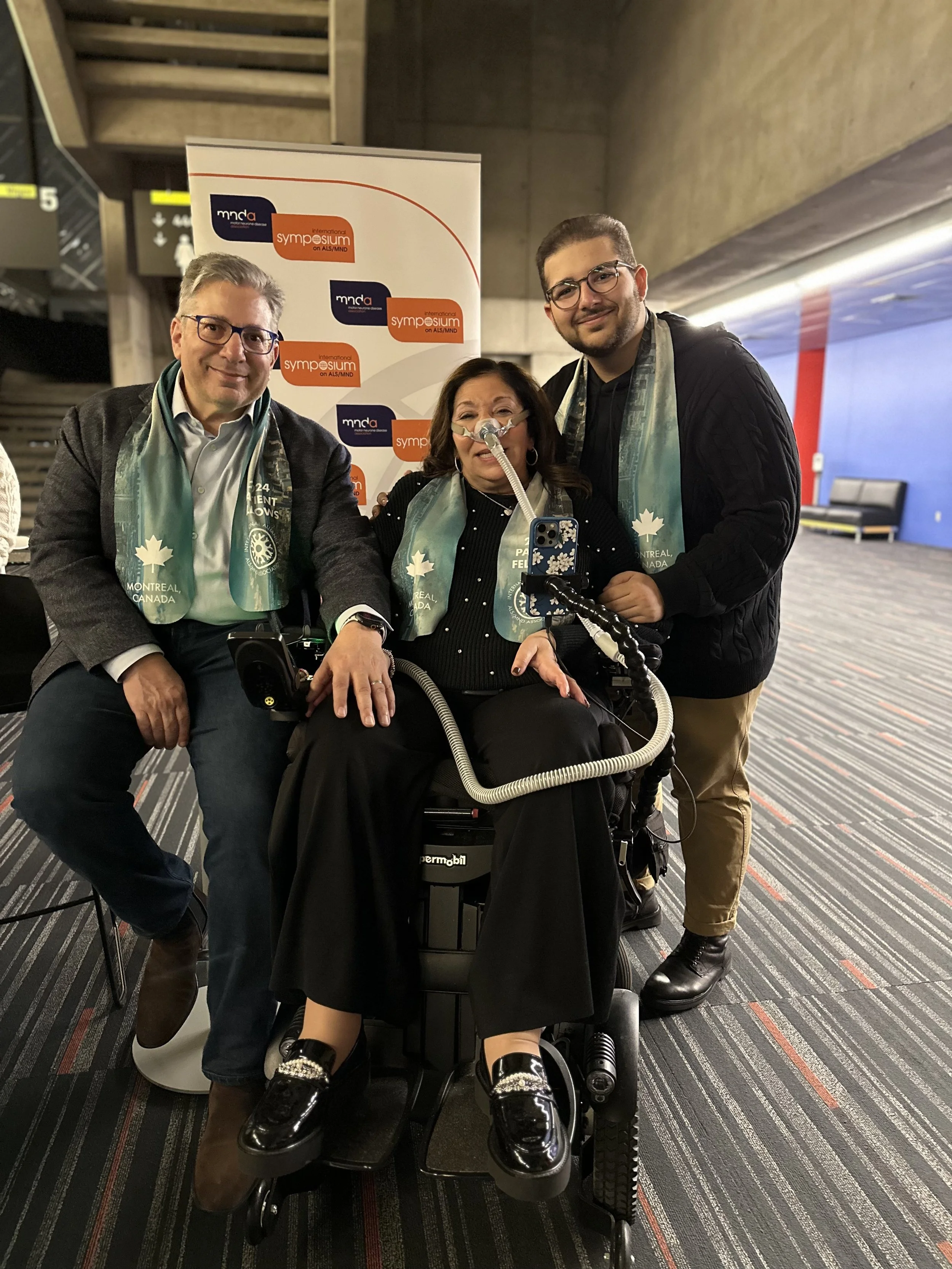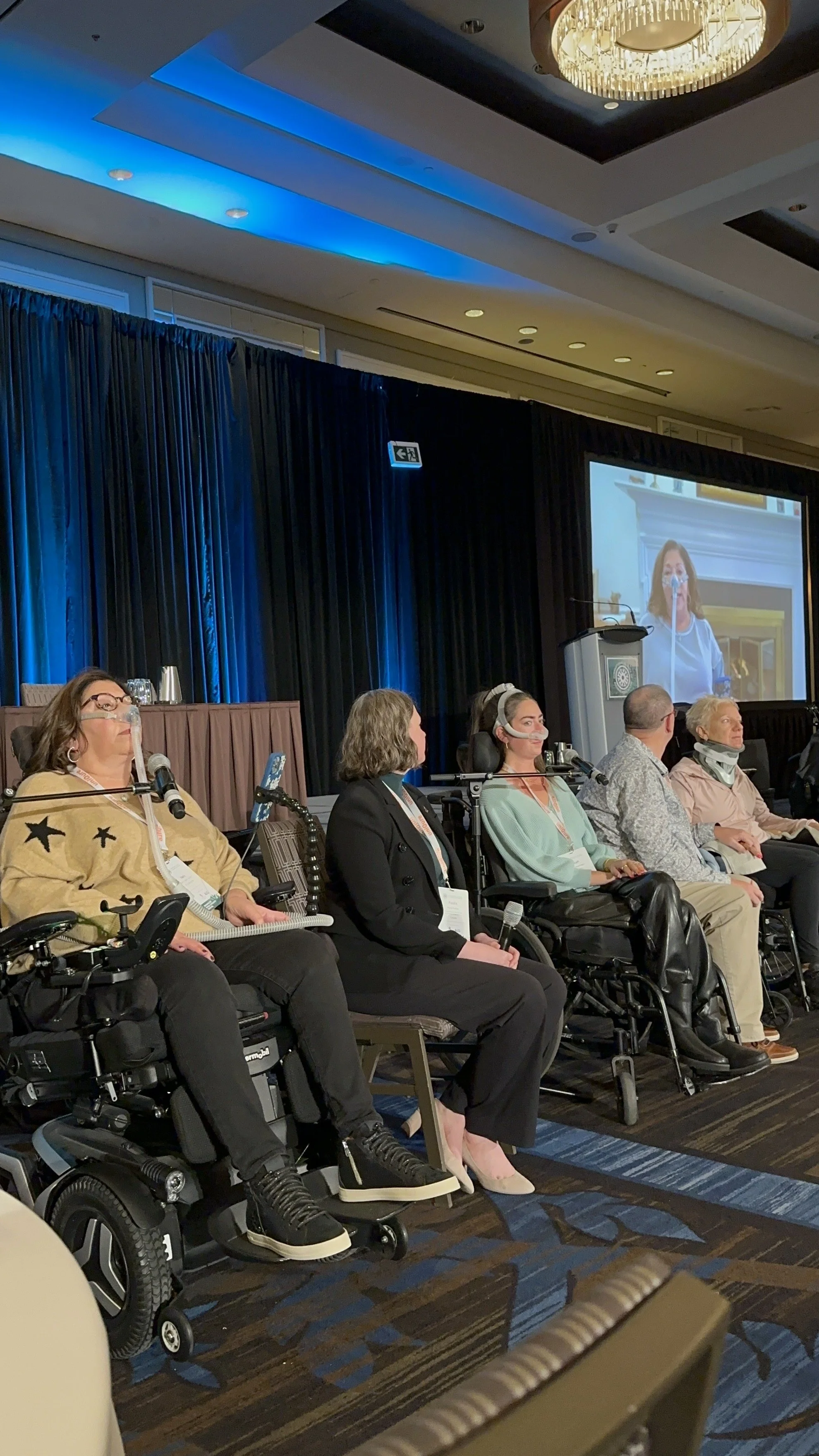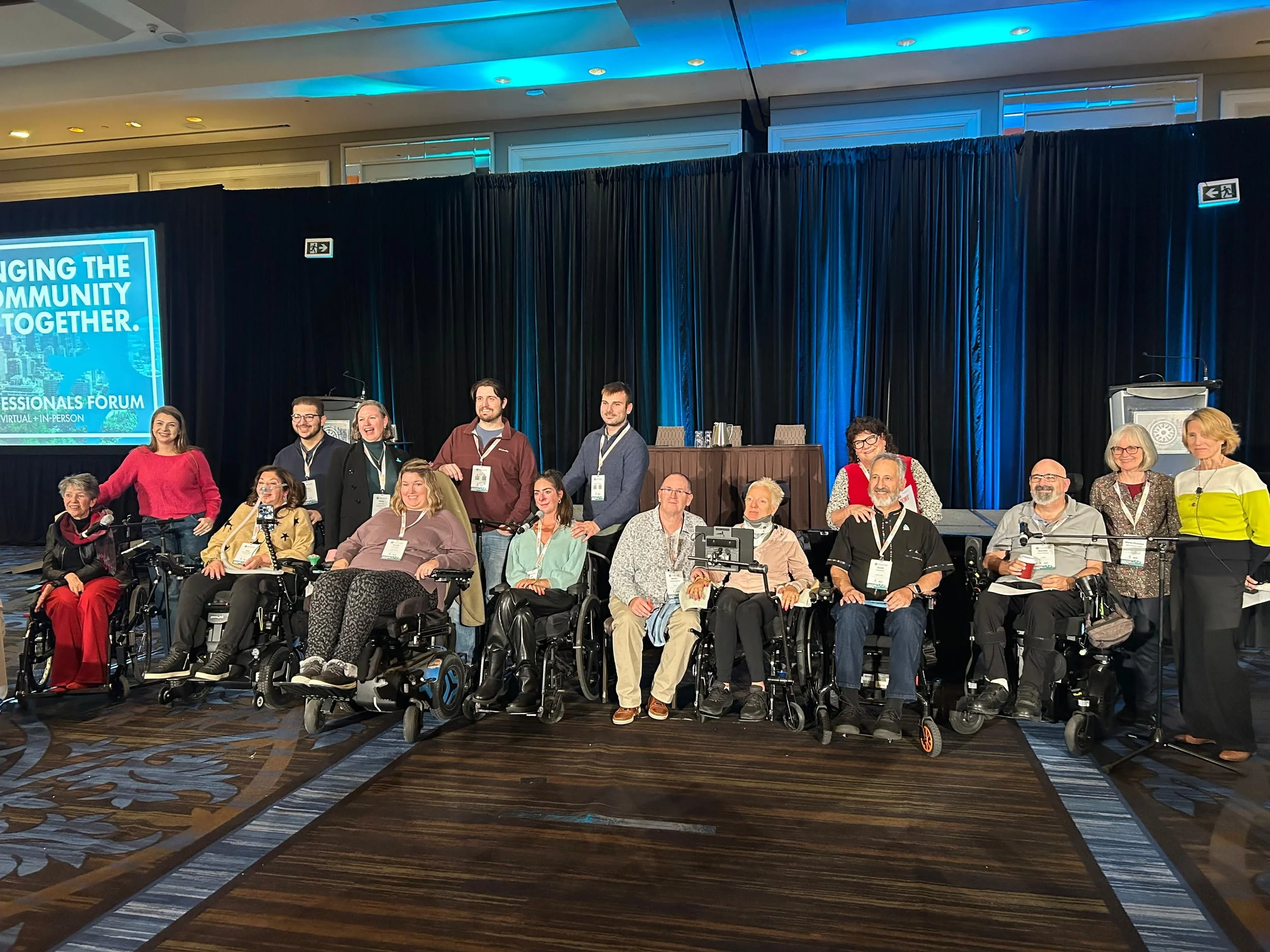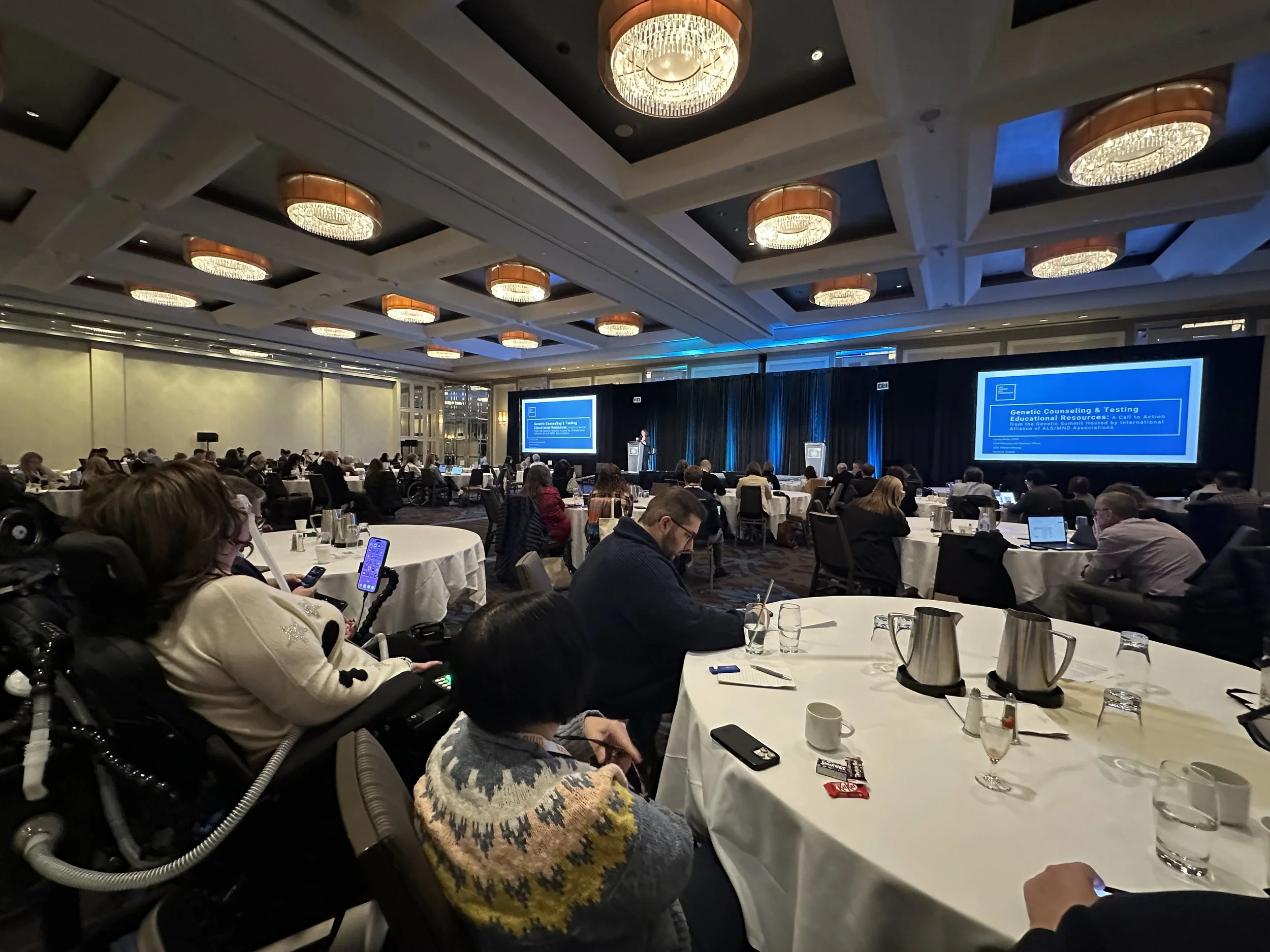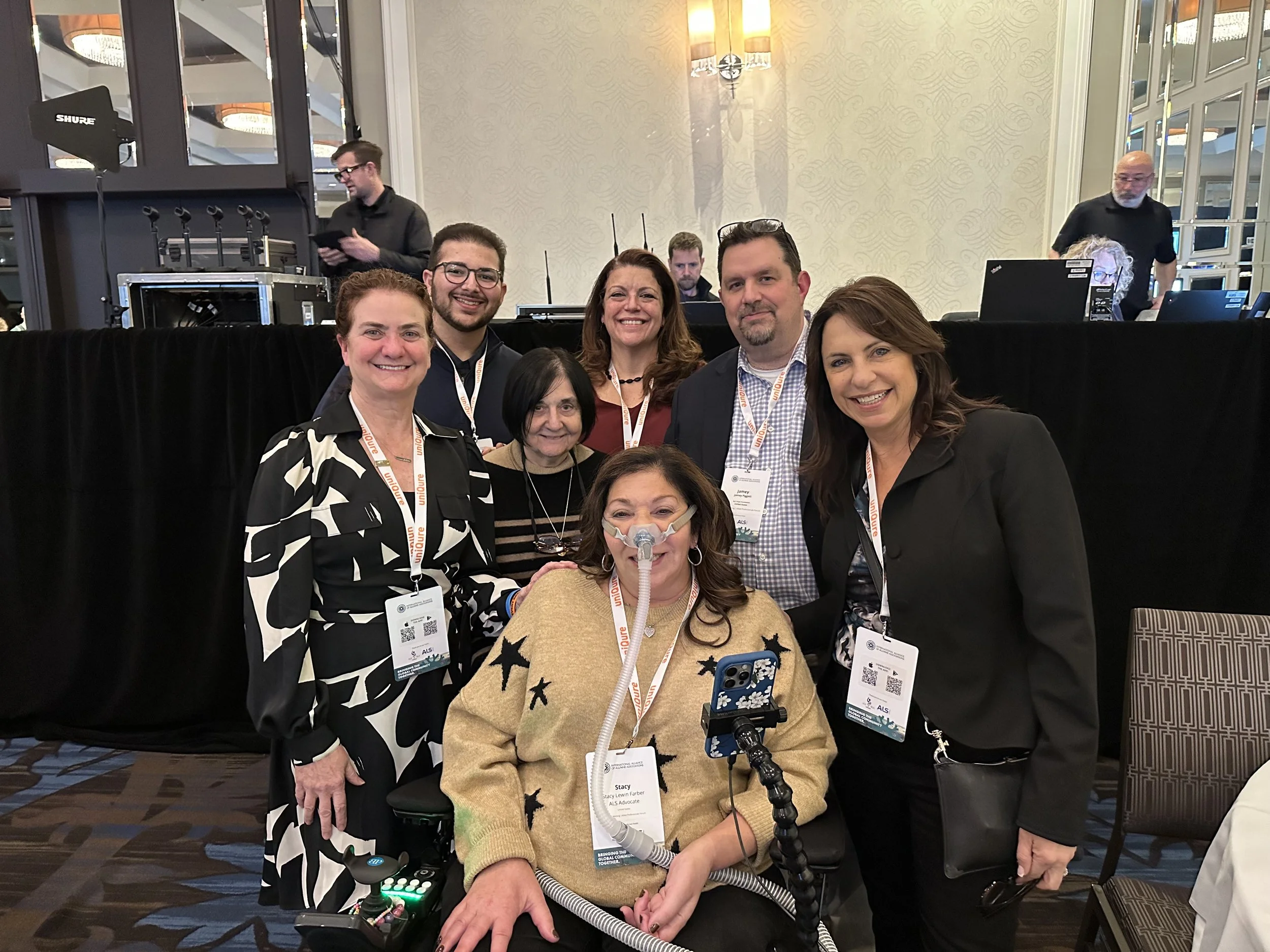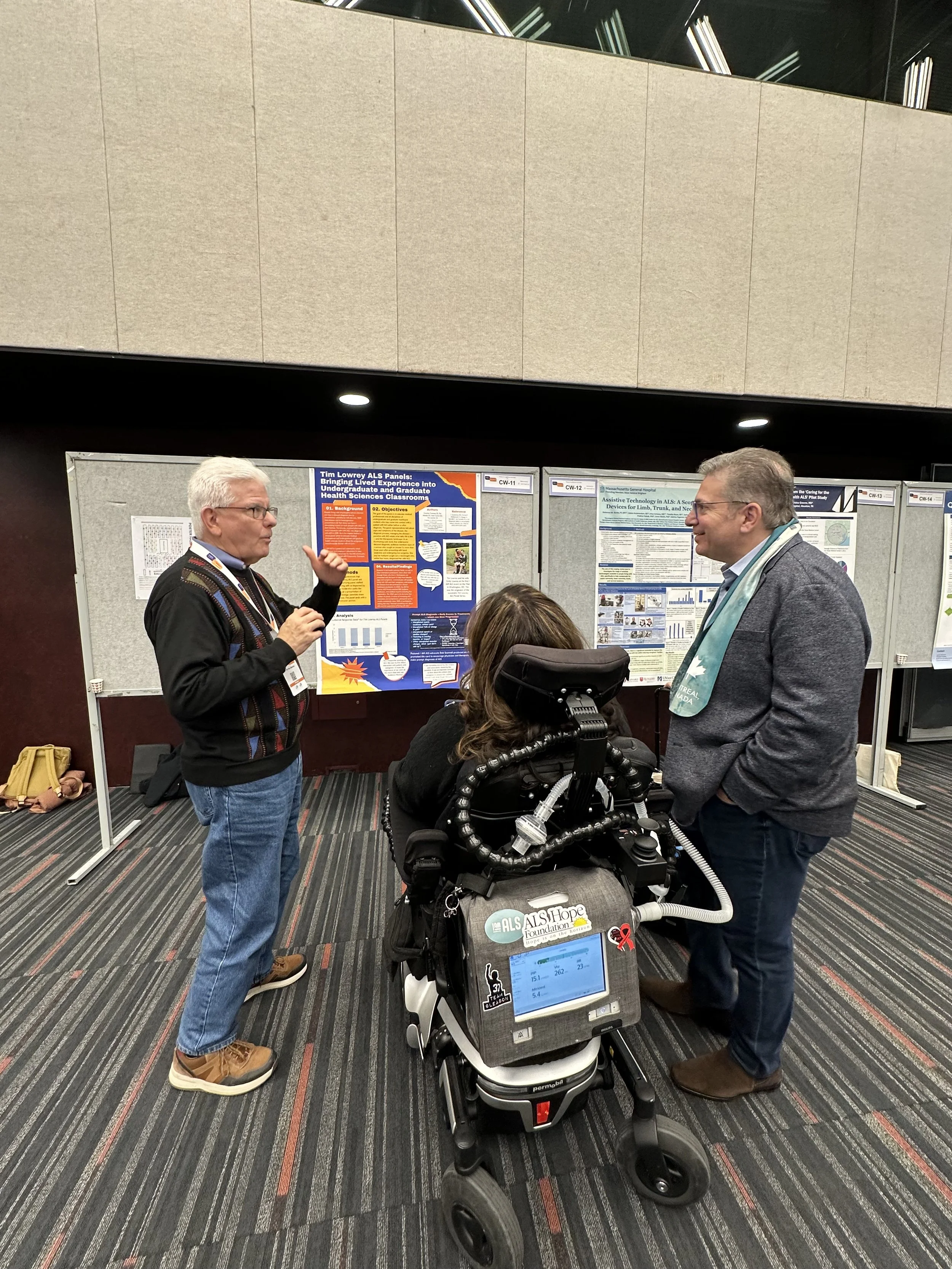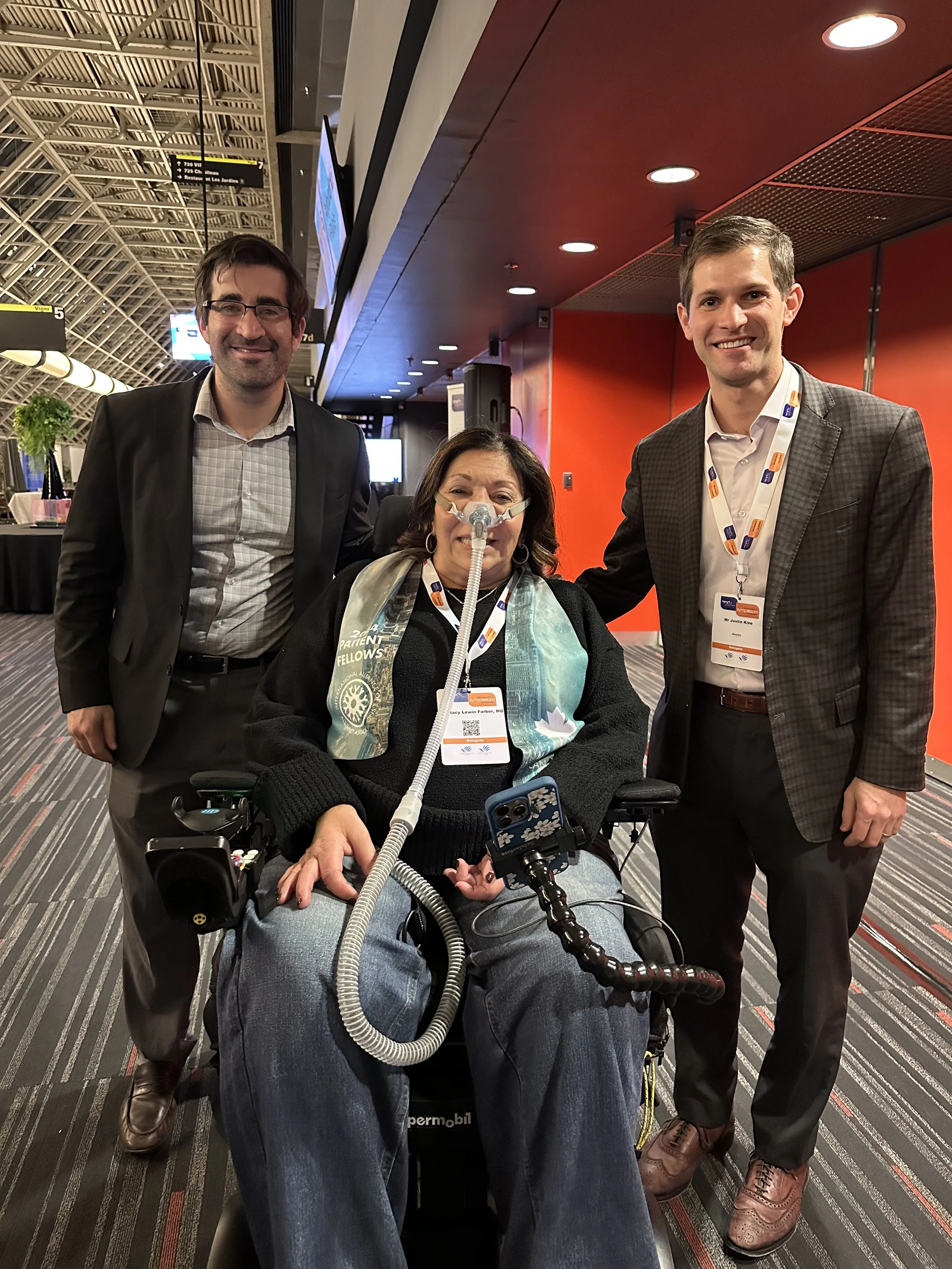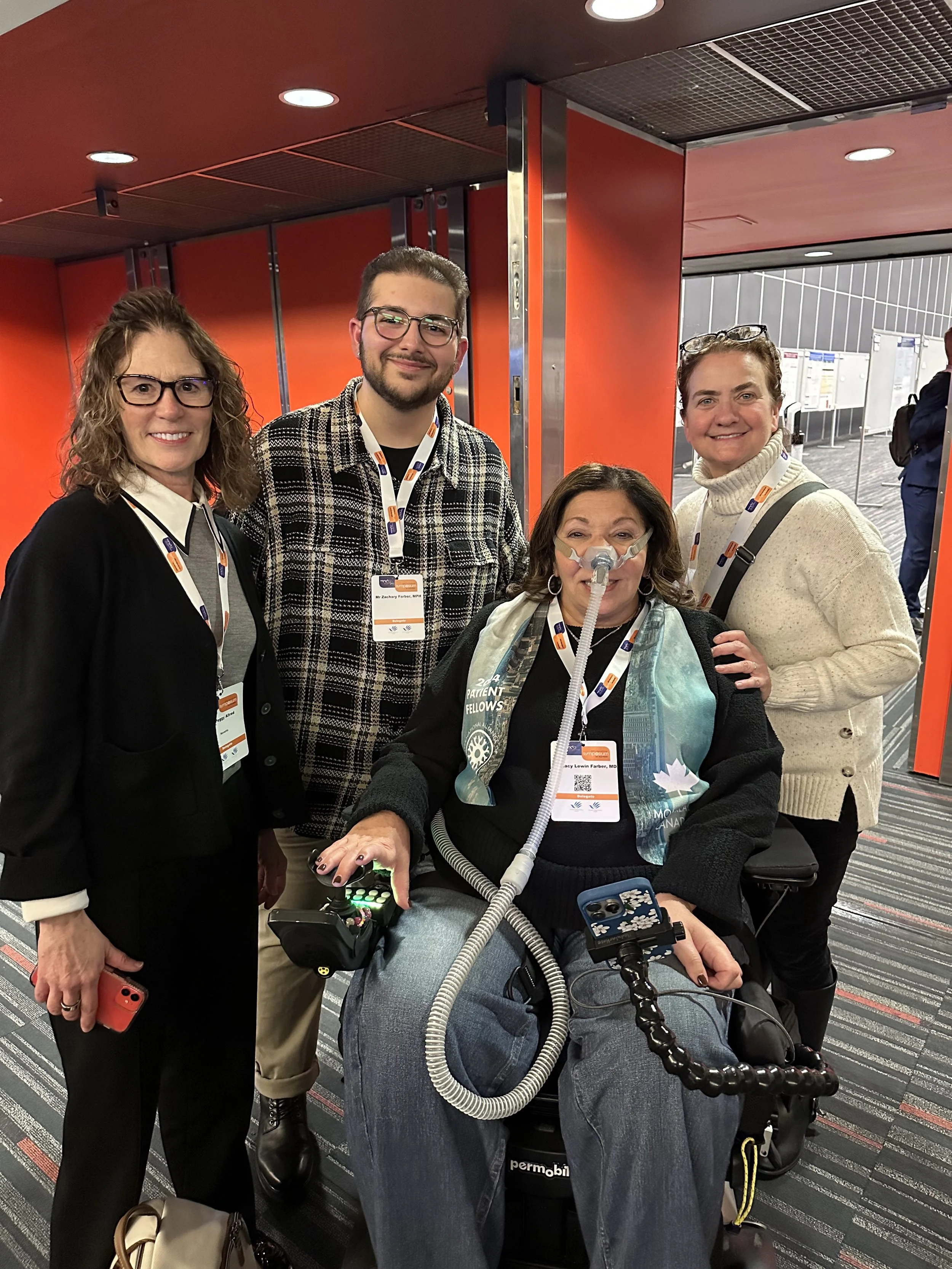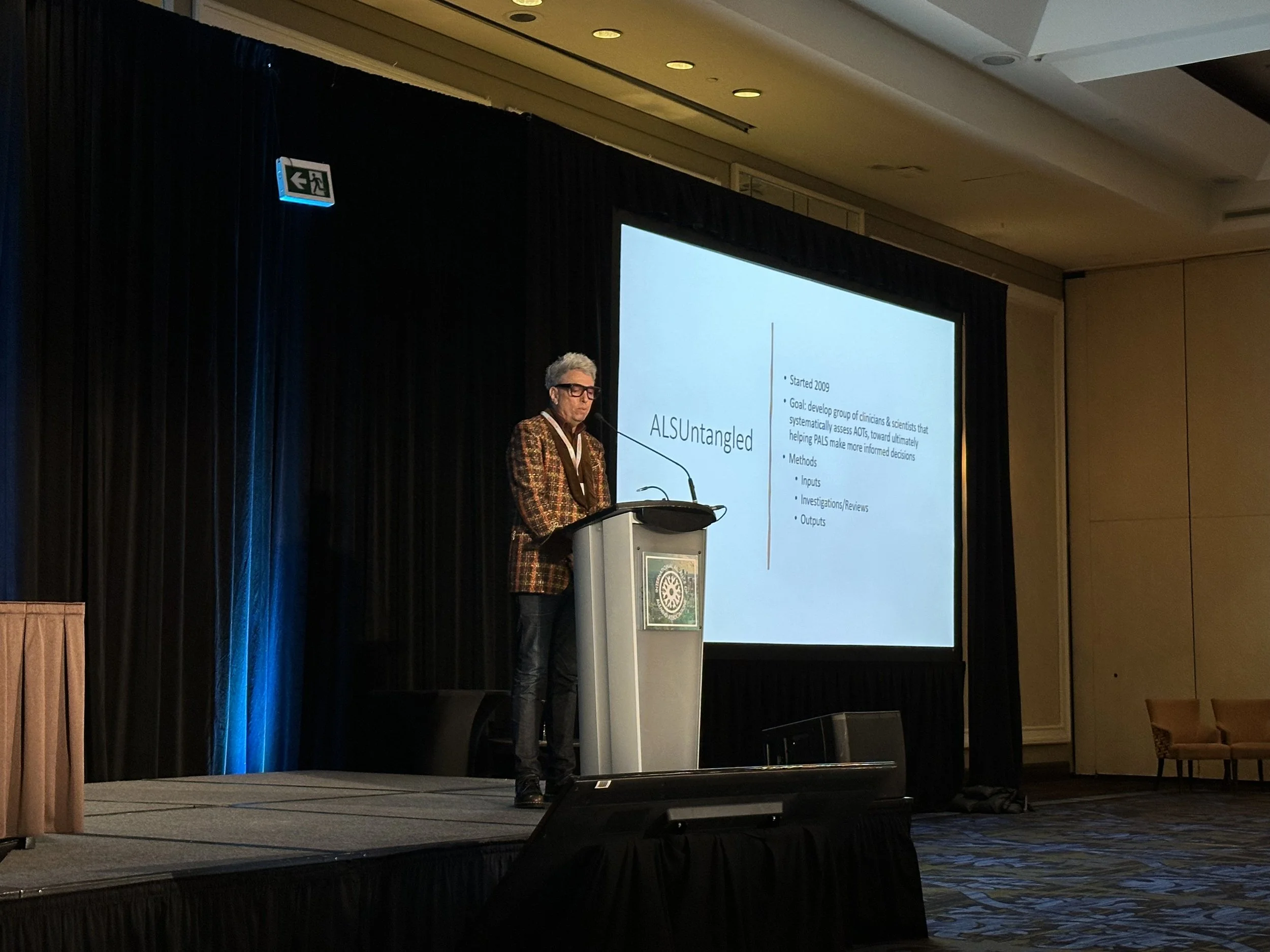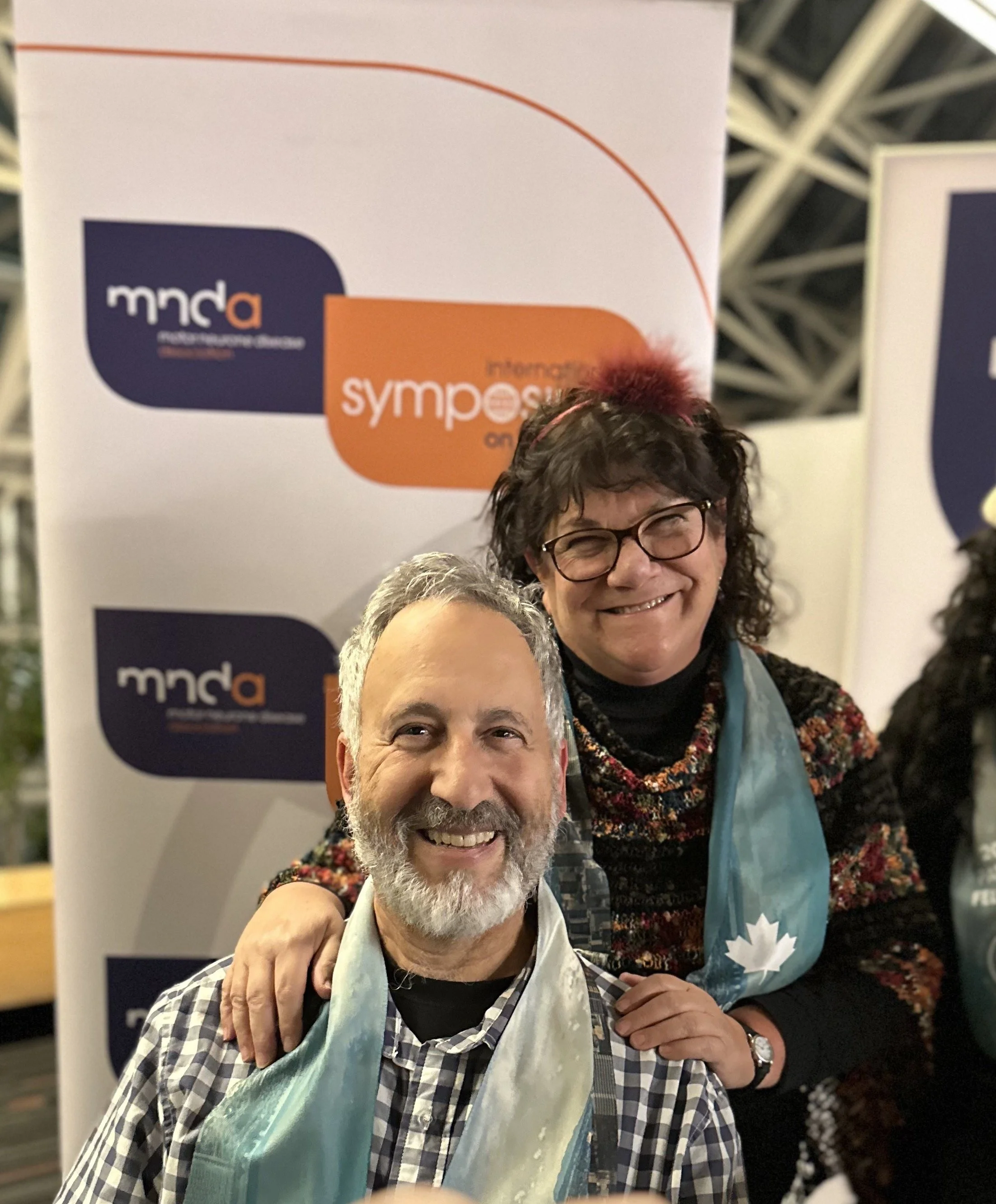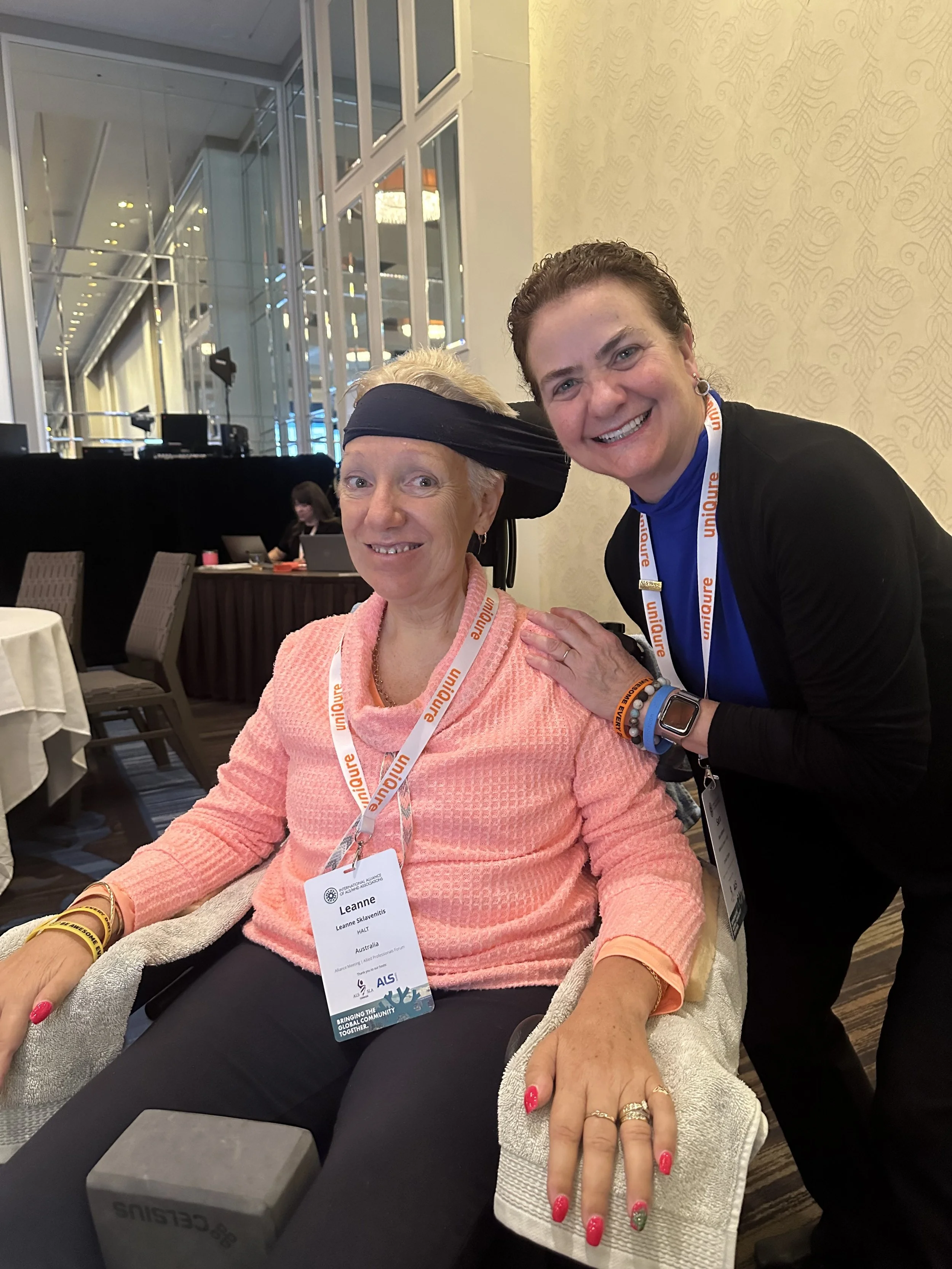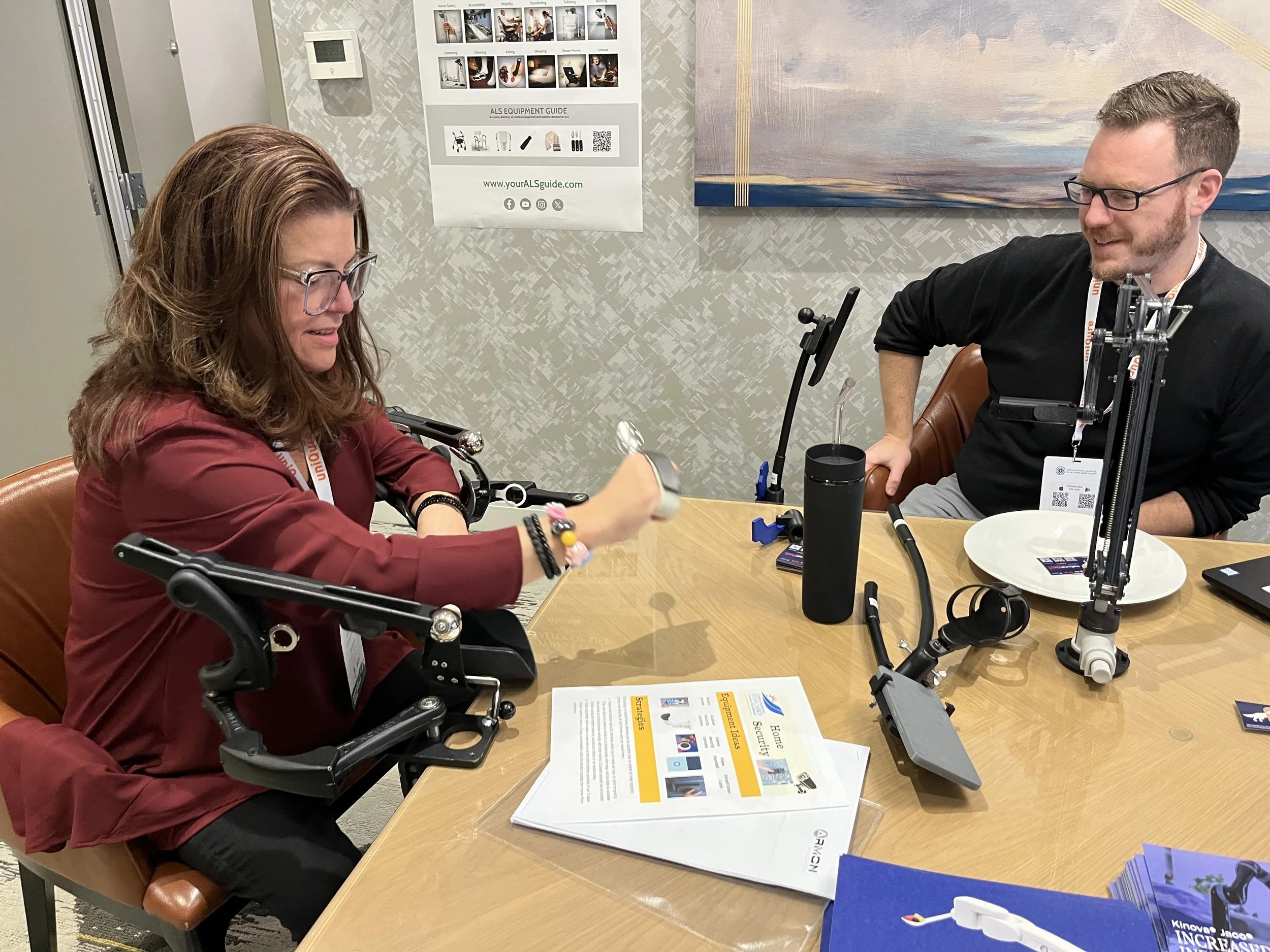Reflections on My Experience at the 2024 International ALS/MND Symposium
/In February 2021, I was diagnosed with ALS, and as I approach my four-year anniversary, I reflect on the challenges and rewards of being involved in ALS advocacy. Over the past three years, I’ve had the privilege of being selected as a Patient Fellow for the International Alliance ALS/AMD Symposium, where we share the knowledge gained with the broader community to raise awareness and provide accurate information.
This year, after attending virtually the last two years, I was excited to travel to Montreal in person. My husband, older son, and I made the journey from New Jersey, navigating icy roads and freezing temperatures, but the winter beauty of Montreal made it all worthwhile.
A heartfelt thank you to the ALS Hope Foundation and Dr. Terry Heiman-Patterson for introducing me to the Patient Fellow program. I am also deeply grateful to Dr. Sara Feldman, Chair of the Patient and Caregiver Advisory Council (PCAC), for nominating me to join the council. These opportunities have allowed me to contribute meaningfully to the global ALS community.
In addition to attending the symposium, I had the privilege of participating in a panel discussion titled Bridging the Gap: What PALS Want Researchers & Clinicians to Know (and Keep Doing Well!). It was an invaluable chance to share our voices and highlight the importance of patient involvement in research and care. As a member of the Patient and Caregiver Advisory Council (PCAC), I also joined my fellow council members in introducing ourselves, discussing the work of the PCAC, and emphasizing its role in advancing ALS care.
At the conference, I engaged with leading experts in ALS research, allied health, and patient care. One particularly fascinating area was the research on pre-symptomatic gene carriers, which is gaining increasing attention and showing promising results. A standout moment was the debut of the A Day in the Life Suite, a fully accessible apartment that allowed attendees to experience adaptive tools and technologies firsthand.
The conference was an unparalleled educational experience, offering excellent networking opportunities and plenty of time to socialize. I had the privilege of meeting people from all over the world—many of whom I’ve only connected with virtually in the past few years. The camaraderie was palpable, and while ALS brought us together, we left as true friends.
I returned home with renewed hope and optimism. Meeting and learning from others in the ALS community, both patients and researchers, has been one of the most rewarding aspects of my journey.
Author Dr Stacy Lewin
Co-Author Scribed and Edited by Daniel Farber
___________________________________________________
Notes from a Virtual Attendee
Todd Kelly also attended the meeting virtually as a Patient Fellow. He’s on the laptop in the photo to the right!
He also shared some takeaways from the meeting.
Some highlights were the following. Dr. Bedlack is an engaging and effective speaker who always manages to cut through the jargon as he did with his session about the ALS Untangled website. CALS (and PALS) could not help but be inspired by Linda Levine, who hilariously imparted caregiver advice that she has learned while supporting her husband David. ALS Hope Foundation’s own Stacy Lewin Farber was part of strong panel of PALS, sharing their expectations of researchers and clinicians. Probably the most impressive presentation came from the keynote speaker, Leanne Sklavenitis, an Australian woman diagnosed with ALS in 2017 who has lost her ability to walk alone and her voice but whose indomitable spirit is an inspiration to all. I find the Alliance Meeting and Allied Professionals Forum much more PALS/CALS-friendly than the more technical International Symposium on ALS/MND.
One element I found fascinating was the “A Day in the Life” Suite, an actual hotel suite set up with a huge range of adaptive equipment for ALS patients. Even a quick glimpse via a video tour was eye-opening to the possibilities to enhance one’s quality of life and reduce the caregiver’s burden somewhat. If only something like this could be made accessible to PALS in a virtual reality format!
One drawback of being a virtual attendee of the actual forum is that only one of the three sessions is streaming live, so the choice is made for you. However, I was able to submit a question online about the ADORE clinical trial of oral edaravone and have it answered by the presenter live. While the ADORE findings were disheartening, the sheer amount of research being done globally and highlighted in the symposium is truly encouraging. The Poster Hall further supplements the scheduled speakers. Many of the scientists presenting are very young/graduate students who offer generational continuity to this ongoing fight.
Todd Kelly
